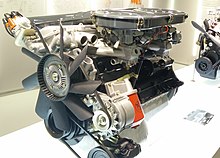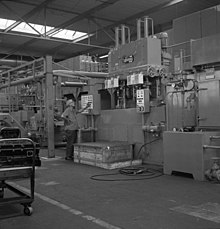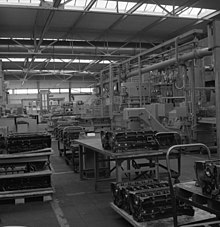
The BMW M10 is a SOHC inline-4 petrol engine which was produced by BMW from 1962-1988. It was the company's first four-cylinder engine since the BMW 309 ended production in 1936 and was introduced in the New Class sedans.

The BMW M20 is a SOHC straight-six petrol engine which was produced from 1977 to 1993. It was introduced eight years after the larger BMW M30 straight-six engine, which remained in production alongside the M20.

The BMW M50 is a straight-6 DOHC petrol engine which was produced from 1990 to 1996. It was released in the E34 520i and 525i, to replace the M20 engine.
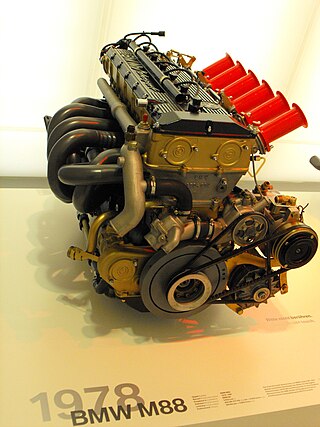
The BMW M88 is a straight-6 DOHC petrol engine which was produced from 1978 to 1989. It is based on the DOHC version of the BMW M49 engine, which was used in the BMW 3.0CSi racing cars.

The BMW E12 is the first generation of 5 Series executive cars, which was produced from 1972 to 1981 and replaced the saloon models of the BMW New Class range.
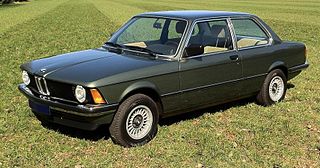
The BMW E21 is the first generation of the BMW 3 Series compact executive cars, which were produced from June 1975 to December 1983 and replaced the BMW 02 Series. The series was exclusively built in a two-door sedan body style. Contrary to its predecessor, a 'Touring' body with a sloped rear hatch was no longer offered.

The BMW E23 is the first generation of the BMW 7 Series luxury cars and was produced from 1977 until 1986. It was built in a 4-door sedan body style with 6-cylinder engines, to replace the BMW 'New Six' (E3) sedans. From 1983 until 1986, a turbocharged 6-cylinder engine was available.

The BMW E24 is the first generation of BMW 6 Series range of grand tourer cars, which was produced from January 1976 to 1989 and replaced the BMW E9 coupé.

The BMW E28 is the second generation of BMW 5 Series executive cars, which was produced from 1981 to 1988 and replaced the E12 5 Series. Pre-series production began in April 1981 and the car was introduced in the autumn that year.
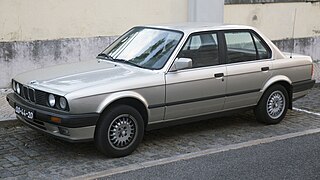
The BMW E30 is the second generation of BMW 3 Series, which was produced from 1982 to 1994 and replaced the E21 3 Series. The model range included 2-door coupe and convertible body styles, as well as being the first 3 Series to be produced in 4-door sedan and wagon/estate body styles. It was powered by four-cylinder petrol, six-cylinder petrol and six-cylinder diesel engines, the latter a first for the 3 Series. The E30 325iX model was the first BMW to have all-wheel drive.

The BMW New Class was a line of sedans and coupes produced by German automaker BMW between 1962 and 1972. These models ensured BMW's solvency after the company's financial crisis of the 1950s and established the identity of BMW automobiles as sports sedans.

The BMW New Six is a line of mid-size luxury sedans and grand tourer coupés produced by the German automaker BMW from 1968 to 1977. All models used the then-new M30 straight-6 engine. It marked BMW's return to the full-size luxury sedan market after a hiatus of 5 years and was introduced as a response to growing market segment dominated by Mercedes-Benz. It was important in establishing BMW's reputation as a maker of sporting luxury sedans.
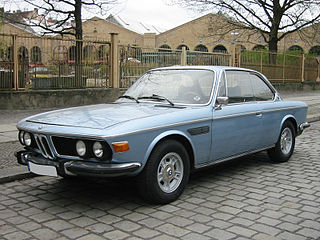
The BMW E9 is a range of coupés produced from 1968 to 1975. Initially released as the 2800 CS model, the E9 was based on the BMW 2000 C / 2000 CS four-cylinder coupés, which were enlarged to fit the BMW M30 six-cylinder engine. The E9 bodywork was built by Karmann.

The Mercedes-Benz M112 engine is a gasoline-fueled, 4-stroke, spark-ignition, internal-combustion automobile piston V6 engine family used in the 2000s. Introduced in 1996, it was the first V6 engine ever built by Mercedes. A short time later the related M113 V8 was introduced.

The M102 engine family is a inline-four gasoline automobile engine family built by Mercedes-Benz in the 1980s and early 1990s. It is a relatively oversquare engine with a large bore and short stroke compared to the M115 engine which was used during the same timeframe.
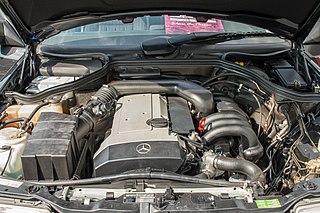
The Mercedes-Benz M104 is a automobile straight-six engine produced from 1988 through 1999. It has a double overhead cam design with 4 valves per cylinder, and used a crossflow cylinder head. It replaced the M103 and was replaced by the M112 V6 starting in 1997. The bore spacing on all M104 engines is the same as M103 engines.
The 4HP is a four-speed Automatic transmission family with a hydrodynamic Torque converter with an electronic hydraulic control for passenger cars from ZF Friedrichshafen AG. In selector level position "P", the output is locked mechanically. The Simpson planetary gearset types were first introduced in 1980, the Ravigneaux planetary gearset types in 1984 and produced through 2003 in different versions and were used in a large number of vehicles.

The BMW N53 is a naturally aspirated straight-6 petrol engine which was produced from 2006 to 2013. The N53 replaced the BMW N52 and was released in 2006 in the post-facelift E60 5 Series.

The BMW OHV V8 is an overhead valve V8 petrol engine produced from 1954 to 1965. It is BMW's first V8 engine, and BMW did not produce another V8 automobile engine until the BMW M60 in 1992.

The BMW M78 is a petrol overhead valve straight-six engine which was produced from 1933 to 1950. It is the first straight-6 automobile engine produced by BMW, an engine layout which has been a key feature of the brand for many years since.

